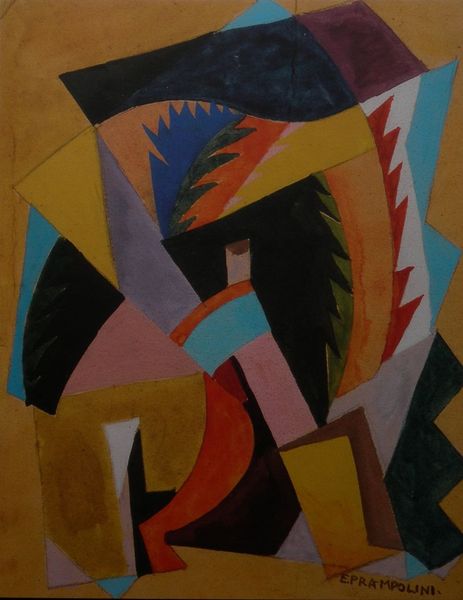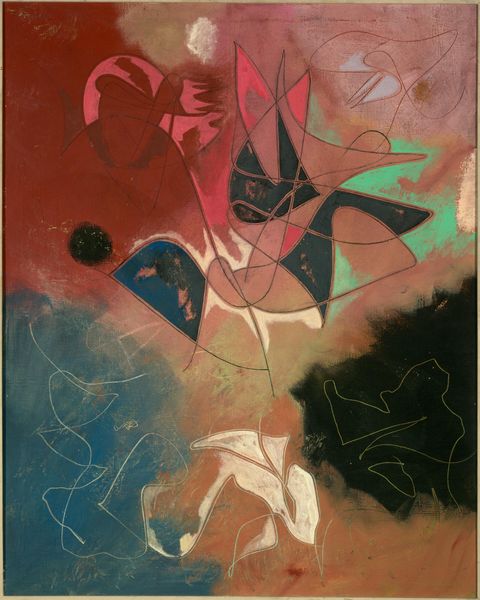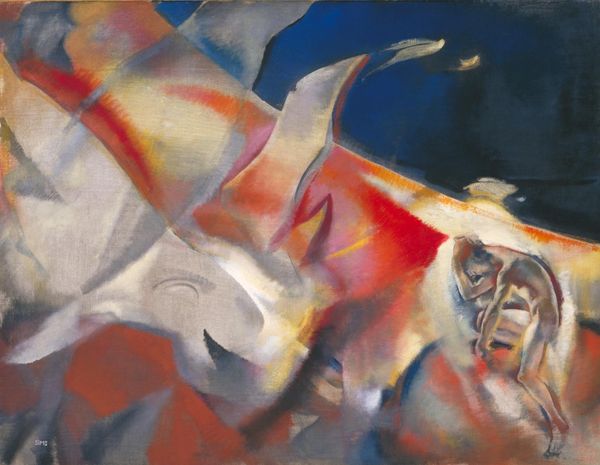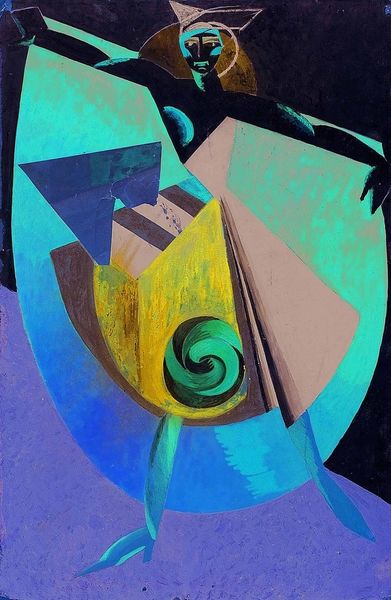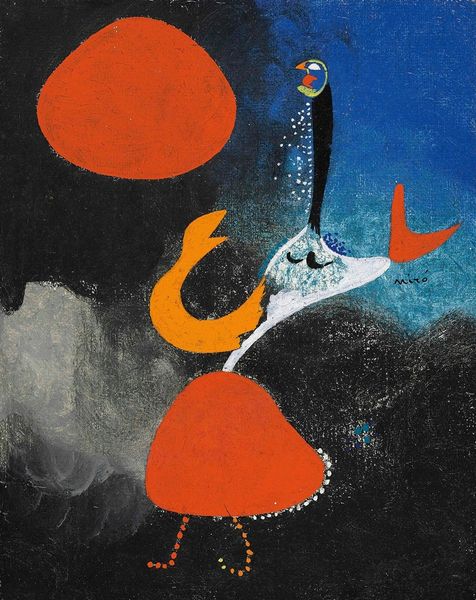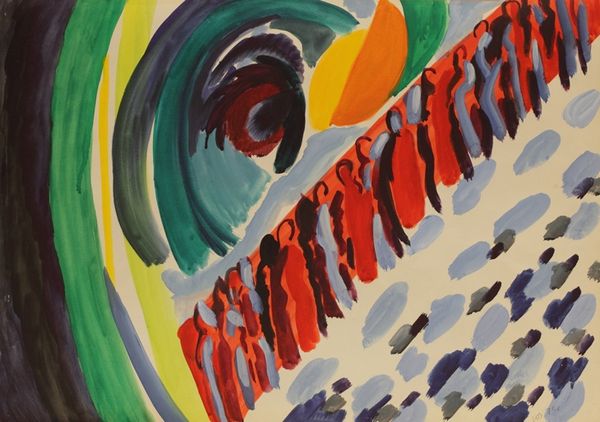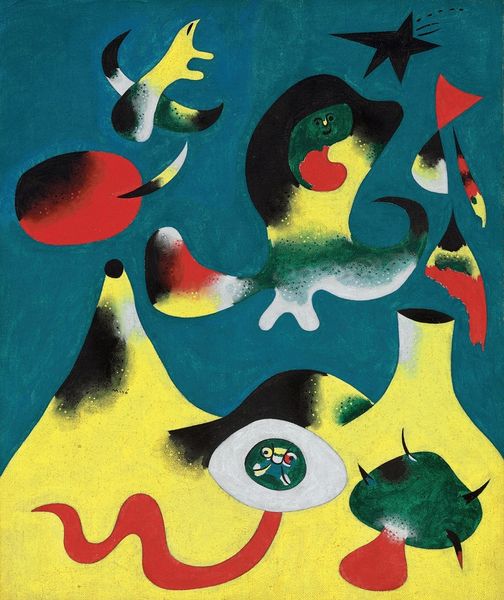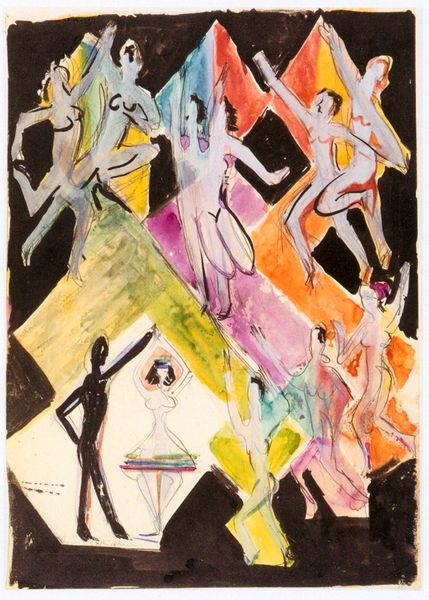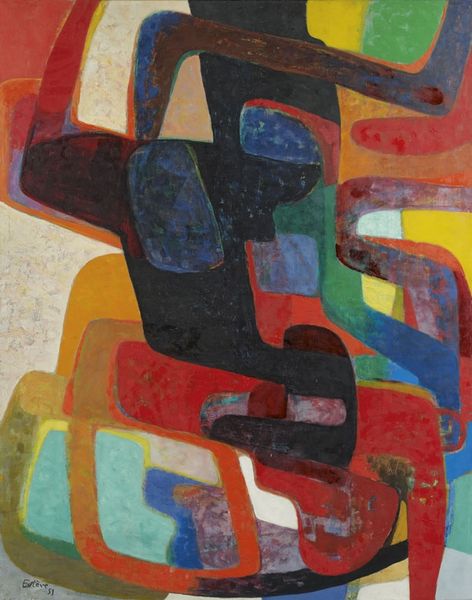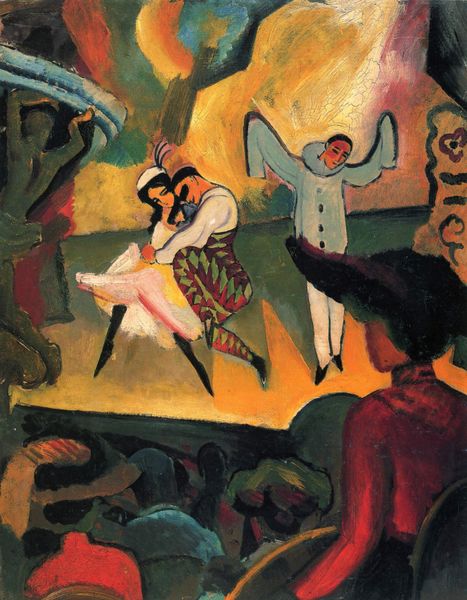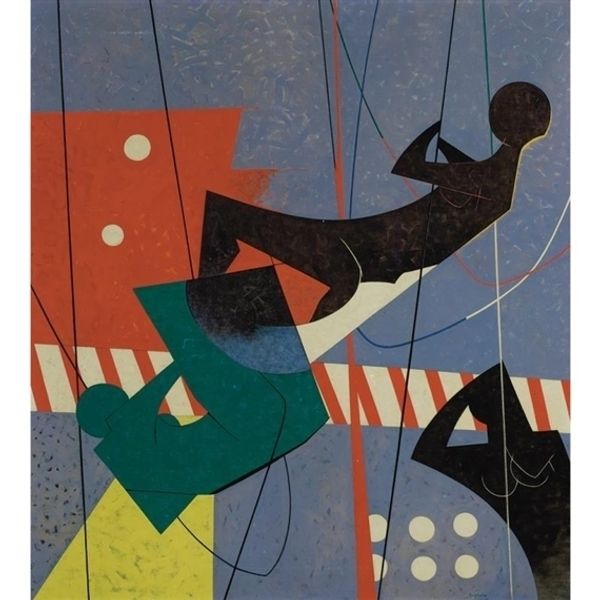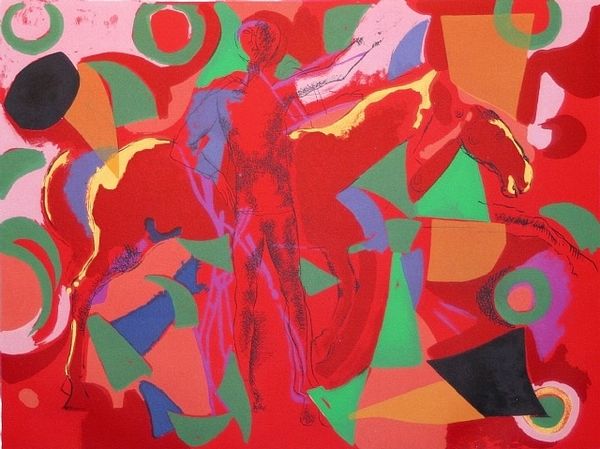
Dimensions: 66.5 x 52.6 cm
Copyright: Public domain
Curator: This is Aleksandra Ekster’s costume design for Salome, created in 1917. It resides here with us at the Moscow Museum of Modern Art. Editor: It leaps off the canvas, doesn’t it? The colors are so vibrant, and the dynamism is infectious. The angularity suggests something very modern, almost mechanical. Curator: Exactly! Ekster was deeply involved in the Russian Avant-Garde, blending Cubism and Futurism. What we see here is a key example of her exploration of movement and form, influenced by her exposure to European modernist movements, especially Italian Futurism. This was a period where artists sought to express the energy of the industrial age. Editor: It's striking how the costume's construction seems to dictate the movement. The geometry almost prefigures the dancer’s choreography. I am particularly interested in how the materials suggested impacted its use—one could envision how specific fabric choices would further define the dancer's expression. Tempera on textile… it begs consideration of texture, doesn’t it? Curator: Absolutely. Though a costume design, it also acts as a potent symbol of female empowerment within the arts at this time. Ekster was influential not just for her artistry but also for her role in creating spaces for women artists and her impact on the very definition of public performance. Editor: It certainly makes one consider the societal role of performance, blurring the lines between mere entertainment and statements on the nature of material, art, and our human drive for consumption. And what a visual spectacle it would be on stage, playing with light, volume, and ultimately influencing audience expectations of visual performance! Curator: Indeed, it’s an exemplary visual manifesto. She pushed the boundaries of costume design as well as our comprehension of stage design as an integral form of the visual arts. Editor: It also proves that you can see, feel, and almost hear the revolution simply from the artwork on display here, doesn't it? The angular forms, those aggressive reds, and urgent yellows... Curator: Well, let’s leave our listeners to further explore Ekster's revolutionary Salome, now that you've primed them so well. Editor: Agreed. I hope our insights sparked a fresh consideration of both materials and movements in theatre production as potential catalysts for understanding the zeitgeist.
Comments
No comments
Be the first to comment and join the conversation on the ultimate creative platform.
